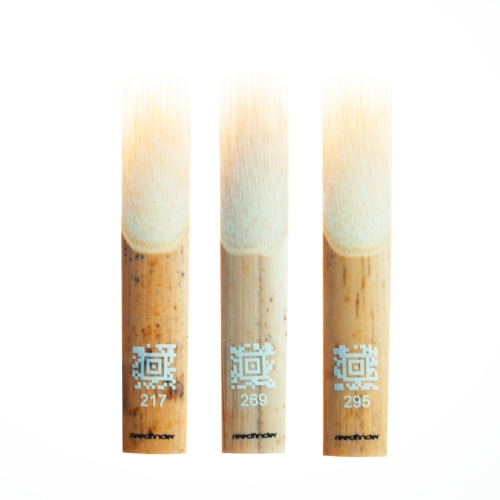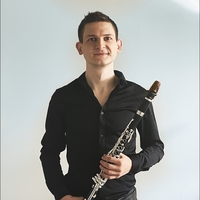The Early Development of the Clarinet
Discover the early history of the clarinet & Johann Christoph Denner's contributions to its creation. Learn how the modifications he made to the chalumeau led to the development of the clarinet with its unique sound.
Johann Christoph Denner
When we talk about the history of the clarinet, we cannot leave out the name of Johann Christoph Denner (1655 – 1707).
The Nuremberg instrument maker and mathematician is responsible for the further development of the chalumeau and thus the creation of a new instrument, the clarinet, in the years between 1701 and 1704. [1]
The most important change that Denner introduced compared to the chalumeau is an additional key located at the bottom of the instrument, which allows for a higher range, known as the clarion register.
It is assumed that he was the first to make mouthpieces with a single reed, which he equipped with a reed made of a different material than the instrument, known as a heterogeneous reed. [2]
Additionally, he extended the instrument and equipped it with a barrel and bell. Johann Gabriel Doppelmayr (1677 - 1750) mentioned J.C. Denner as follows:
 "Finally, his artistic ambition led him to develop and improve the aforementioned instruments even further, and this good intention actually achieved a desired effect when, at the beginning of this century, he invented a new type of wind instrument, the so-called clarinet, which gave great pleasure to music lovers and also improved the chalumeaux." (Translated from German) [3]
"Finally, his artistic ambition led him to develop and improve the aforementioned instruments even further, and this good intention actually achieved a desired effect when, at the beginning of this century, he invented a new type of wind instrument, the so-called clarinet, which gave great pleasure to music lovers and also improved the chalumeaux." (Translated from German) [3]
Regarding the exact innovations of J. Christoph Denner, we can only conclude from the instrument made by his son, Jacob Denner, as it is the first preserved clarinet and is kept in the Nuremberg National Museum. Some sources also attribute the invention of the clarinet to him, while J.C. Denner is said to have only worked on the further development of the chalumeau. [4]
How did the first clarinet sound like?
The sound of the instrument at that time was different from the familiar tone of the modern clarinet. It was more similar to the higher registers of the trumpets used at the time. Therefore, the instrument was named after the baroque trumpet (clarino). In the "Musicalisches Lexicon" by Johann Gottfried Walther, which was published in 1732, he mentions the "clarinetto" as a wind instrument with a wide mouthpiece and a sound similar to a trumpet from afar. [5]
This sound also determined the role of the instrument in an orchestra. The lower registers of the clarinet were not utilized by composers until the end of the Baroque period.
The clarinet enabled much more virtuosic playing, even though it had a trumpet-like sound. As it became more widespread in orchestras, more works written for the clarinet appeared, and efforts to further develop the instrument were initiated.
[1] Scientists still disagree today whether the clarinet is the result of the constant development of the chalumeau or the invention of a completely new musical instrument.
[2] Karp, Cary. The early history of the clarinet and chalumeau. in: Early Music 14, 4. (1986), S. 545.
[3] Doppelmayr: Nachrichten von den Nürnbergischen Mathematicis und Künstlern. 1730. zitiert nach Brymer 1976. S. 34-35.
[4] Rice, Albert R. The Baroque Clarinet. Oxford, 1992. S. 42.
[5] Johann Gottfried Walther: Musicalisches Lexicon. 1732, S. 168.
Do you like this article?
Thanks for your feedback

World’s #1
Reed Recommendation System
We believe every musician deserves a reed that matches their unique style and sound. Each reed is selected with cutting-edge AI and machine learning based on your playing feedback.
Should You Try the Benz-Tec Digital Reed Tester? I've tested it for you!
Check out the best clarinet jokes to brighten your day!
Struggling to hit the right notes? Your instrument might be the culprit! Learn how to fix intonation problems and stay in-tune.
Unleash the full potential of your clarinet with our exclusive care guide. Elevate your playing with tips that ensure your instrument remains in perfect condition.
Here are the top 7 picks of best applications to download for classical musicians. Tuners, Metronomes and more.
Buffet Crampon's latest innovation: the Prodige Pocket Clarinet. Is it really the best instrument for young clarinetists? Check out our review!
Discover the best clarinet mouthpieces! Check out our reviews and recommendations for Bb and Bass clarinet.
Learn the technique of circular breathing. Expert guide with step-by-step instructions and troubleshooting tips for continous breathing.
A groundbreaking innovation of Buffet Carmpon: Clarimate. This is our honest review about its innovative features and real-world performance. Is it for you?
Discover the role of clarinet ligatures in achieving optimal sound and control. Explore various ligature types, materials, and techniques to enhance your clarinet playing experience.

